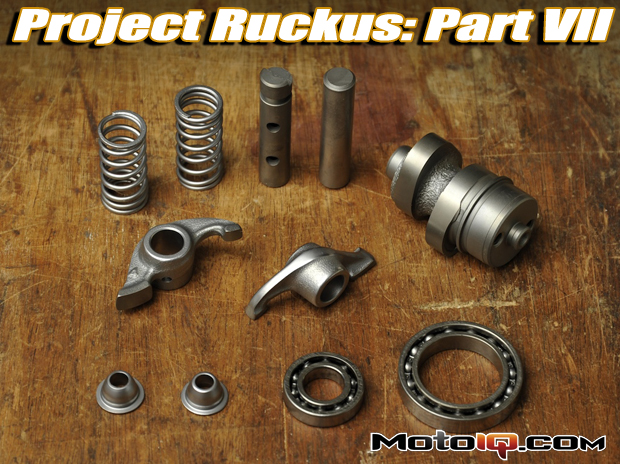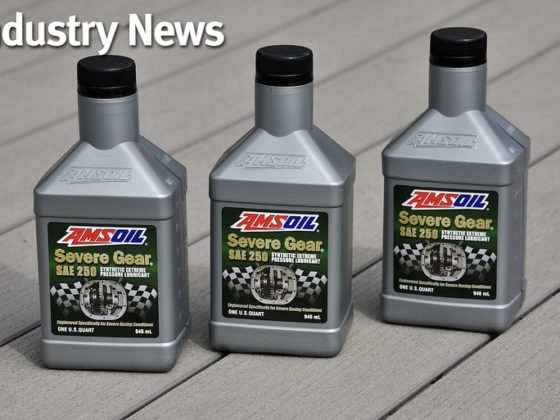
Project Honda Ruckus Part 7: Building the Engine
By Jeff Naeyaert
In our efforts to build the ultimate Honda GET 50cc engine for our Honda Ruckus, we have learned a few things with our first iteration of our modded engine, lessons to make our second one better we hope. In our quest to get even more power out of our little Honda we are going to build another engine, this one is going into another Ruckus in our stable. Our goal for engine number 2 is to surpass the 58 mph of our first engine and reach 60 mph with the Honda engine that came with the Ruckus. For the Ruckus, many people simply swap the Honda engine for a larger GY6 4 stroke or a two stroke Yamaha Grand Axis or Zuma powerplant. However for our current project, we want to push the limits of the GET Honda to max out our little Honda.
To read about our previous engine build Honda GET Engine and Ruckus Bottom End.
 |
| Looking at our stage 2 cylinder head we can see how our milling has given us a quench area without welding. It also ups our compression ratio to 13.8:1. You can see how our intake port is larger than before as well. The frosted look of the combustion chamber is the surface that WPC treatment leaves behind. The WPC will make our valve job more durable, important because our valve seating surface has been narrowed for the best flow. |
 |
| Our valves are re-contoured and backcut for better flow. The valve seating area has been moved outboard as far as possible to maximize the effective valve area. Also note that the valve stem has been reduced in diameter by the head to further improve flow. Finally the entire valve is WPC treated to reduce friction at the stem and to improve the life of the valve seat. |
From our first engine experiment, we learned that we can go with more aggressive headwork. In our first engine we were worried that going too big in the ports might reduce the velocity in the ports of our tiny 58cc engine causing us to lose bottom end torque. We assume that the stock ports flow really poorly as our engine really responded to our first attempt at port work by gaining power at very low rpm. Since the head is so tiny and it would take quite a bit of expensive fixturing to get the head on a flow bench, we don't have true flow data. Since we were so concerned about flow velocity on our first head we concentrated on porting in the bowl area and directly under the valve seats with a lot of detail done in the valve job. Still our headwork was the most extensive ever done to the GET engine and we feel that it was the main component in our exceptional performance.
 |
| In this picture you can see how we flush cut our valve guides for more flow. You can also see how thick the valve guides are in relation to the port area and how much flow they block. In this close up you can see the frosted look of WPC treatment and the smoothness of the radius valve job. None of the other ported Ruckus heads on the market can say they are fully ported all the way through, particularly on the extremely curved intake port. This is testament to DPR's skill. |
Once again we turned to Dan Paramore Racing for our headwork. Since we learned that our headwork improved both bottom end as well as top end performance, we decided to go much bigger in the porting of our new engine. We increased the port size 2mm over our last iteration, particularly in the area of the valve guides where we feel that the port is the most restricted. We shaved the valve guides flush with the port walls and enlarged the port straight through this area. Engines get most of their valve cooling through conduction of the valve guide and the valve guide is critical for proper support of the valve to get good valve seal. The GET engine has really long valve guides and the valve stems are well supported so we felt that it was not too extreme to cut them flush with the port to gain a lot more cross sectional area.
 |
| Our exhaust port is much bigger than previously. |
 |
| Our new intake port is much larger than previously thought to be OK for good bottom end. |




6 comments
Hello there. I’m trying to replicate your 58.1cc ruckus project. How has it lasted since completion? Is it still running well? Any issues?
It is still running well. It has sat for a few years and we just got it running again.
In other words, its not a daily driver, and just a show piece. If you want speed on your 50cc, sell it, and get a bigger bike/motor, and don’t sacrifice the reliability.
It is perfectly reliable. I rode it a lot, I just lost interest in it because our shop moved to where the drivers suck and I had to ride through some rough neighborhoods to get there so I didn’t feel safe riding it to and from work anymore. This made me lose interest in scooters.
Where did you end iup with top speed on this one?????
60 MPH